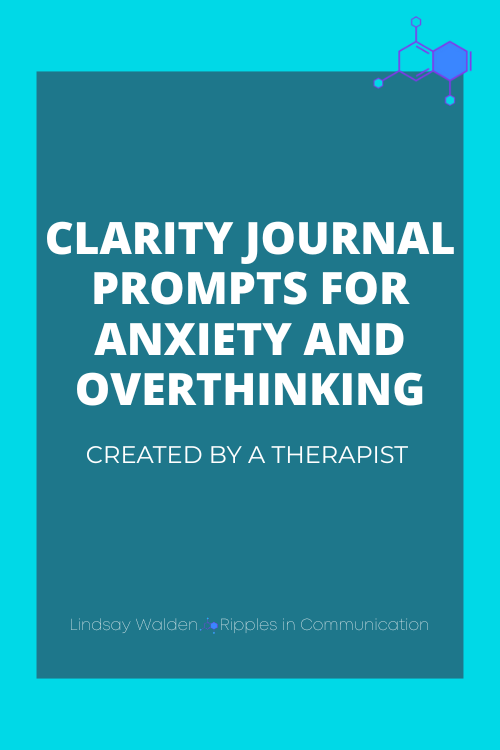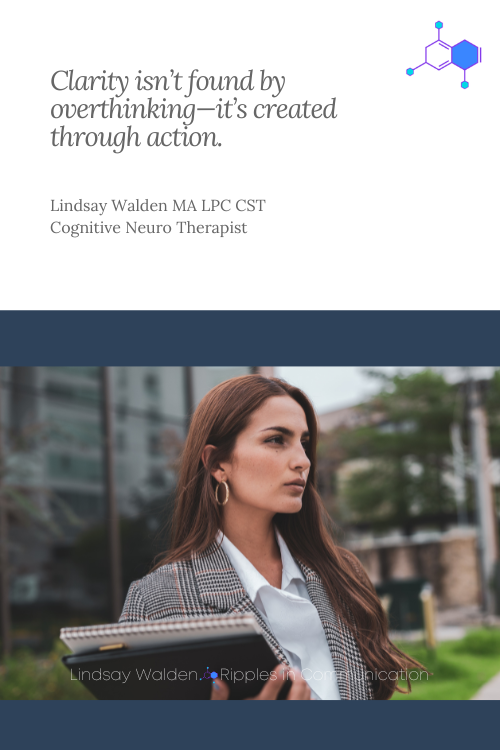What Do You Actually Want? A Therapist's Guide to Getting Unstuck
Ever found yourself saying something like:
“I don’t know what I want in my career.” “I feel like I’m just going through the motions.” “I know I want more—but I don’t know what that actually means.”
You’re not alone. That quiet sense of restlessness, of knowing something’s off but not quite knowing what to do about it, is one of the most common challenges I see in therapy.
Here’s the truth most people miss: The problem isn’t motivation—it’s clarity.
Without clarity, it’s easy to fall into cycles of overthinking, procrastination, or staying stuck in situations that don’t feel right—but aren’t quite “bad enough” to walk away from. You wait for a sign. You keep hoping that one day it’ll all just click.
But clarity doesn’t arrive out of nowhere. It’s not found—it’s created.
And one of the most powerful tools for creating clarity? Journaling. But not the "dear diary" kind.
I’VE GOT SOMETHING SPECIAL FOR YOU!
Have you grabbed your FREE CNT Toolkit Sampler yet? It’s packed with science-backed tools designed to help you regulate emotions, manage stress, and develop deep self-awareness. If you’ve ever felt overwhelmed by your reactions or stuck in negative thought patterns, this toolkit will give you the proven strategies I use with clients to help them strengthen emotional neutrality, rewire unhelpful responses, and build lasting resilience. Inside, you’ll find practical exercises and guided reflections to help you navigate challenges with clarity and confidence. Enter your email below, and I’ll send it straight to your inbox!
Why Journaling Is a Clarity Superpower (Backed by Science)
Your brain holds two kinds of knowledge:
Explicit knowledge: what you consciously know—like your job title or your morning routine.
Implicit knowledge: what you feel, sense, or know deep down... but can’t quite put into words yet.
That murky feeling of being stuck often comes from a disconnect between these two. You know something’s missing, but you can’t name it. This is where journaling comes in.
Journaling acts like a bridge between your conscious mind and subconscious insights. It allows you to bypass the noise in your head—the overthinking, the pressure, the fear—and access the quiet truths underneath.
When you write, you activate both logic and intuition. You start to spot patterns. Feel your way through foggy emotions. And pull out truths you didn’t even realize were living inside you.
3 Therapist-Backed Journaling Methods to Get Unstuck
Below are three exercises I regularly use with clients who feel directionless, overwhelmed, or uncertain about what they want next. They're simple but powerful—and they’re designed to get you out of your head and into action.
1. The “If I Weren’t Afraid” Method
When to use it: You sense a desire, but fear keeps clouding your judgment.
Start by setting a timer for five minutes. Then, complete this sentence as many times as you can: “If I weren’t afraid, I would…”
Don’t overthink it. Just let the answers flow—even the scary, ridiculous, or impossible ones.
You might write:
If I weren’t afraid, I’d quit my job and launch my own thing.
If I weren’t afraid, I’d finally tell my partner how I really feel.
If I weren’t afraid, I’d move across the country.
This exercise works because fear often drowns out your deeper desires. But when you temporarily remove fear from the equation, what you really want starts to shine through.
2. The “Perfect Day” Visualization
When to use it: You feel burnt out, numb, or unsure what makes you happy anymore.
Close your eyes for a moment and imagine this: You wake up tomorrow with total freedom. No obligations. No expectations. Just a clean slate.
Now write:
Where are you waking up?
What’s the first thing you do?
How do you spend the morning? The afternoon?
Who are you with, if anyone?
What activities bring you the most energy, joy, or peace?
How do you feel throughout the day?
The details of your “perfect day” offer more than fantasy—they hold real clues about your values. If you notice themes like calm, creativity, nature, adventure, or connection, those are signals. They show you what deserves more attention in your actual, daily life.
3. The “Regret Reflection” Method
When to use it: You’re stuck between two options—or afraid of choosing wrong.
Instead of asking, What’s the right decision?, try this instead:
If I DON’T do this, will I regret it in five years?
If I DO this, will I regret it in five years?
This method works because your brain is wired to avoid regret more than it’s wired to chase joy. When you frame your decision through a future lens, your priorities often become crystal clear.
The “One Sentence Clarity Test” (Do This Right Now)
Here’s a quick way to cut through the noise if you’re feeling overwhelmed:
Write down one thing you know for sure that you want, no matter how small. (Example: “I want to feel less overwhelmed.”)
Then write down one step you could take toward that today. (Example: “I can turn off notifications for the next hour.”)
That’s it. One want. One step. Clarity builds momentum—and momentum creates change.
How the Anytime Journal Helps You Stay Clear in Real Life
If you want help keeping this kind of clarity close (instead of just having aha-moments you forget about by next week), the Anytime Journal was made for you.
It’s not just a notebook—it’s a practical, neuroscience-based system to:
Help you ask better questions
Spot patterns in your emotions, decisions, and energy
Create mini-breakthroughs anytime you feel stuck
Because clarity shouldn’t be a once-in-a-while thing. It should be something you can tap into anytime you need to realign.
Final Thought: Clarity Comes from Action—Not Overthinking
So many people stay stuck because they think they need a master plan before they make a move. They’re waiting to be 100% sure. But clarity doesn’t come from thinking—it comes from doing.
You don’t need a 5-year plan. You just need a starting point.
So instead of asking, “What’s my big purpose?” Try this: “What’s one thing I know I want today—and what’s one small action I can take toward it?”
Do that, and the next step will get clearer. And the one after that. And the one after that.
You’re not as stuck as you think. You’re just one question away from clarity.







